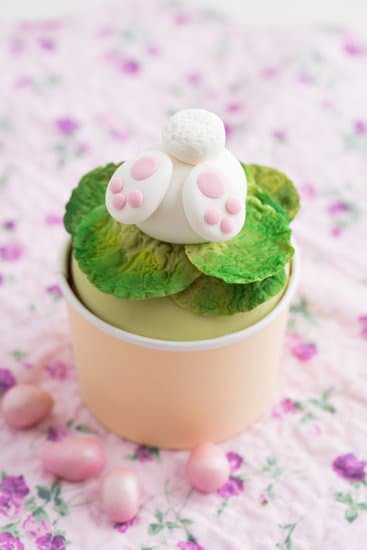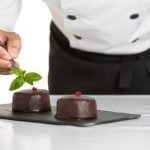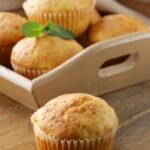Are you looking to learn how to decorate a small cake and create beautiful and eye-catching designs? Decorating small cakes can be just as fun and rewarding as decorating larger ones. Whether it’s for a special occasion, a gift, or simply to satisfy your creative instincts, knowing how to decorate a small cake can make all the difference.
When it comes to decorating small cakes, the possibilities are endless. From using fondant to creating intricate designs with buttercream, the art of decorating small cakes allows for creativity and personalization. In this article, we will explore the importance of decorating small cakes and provide you with essential tips, tricks, and techniques to help you master the art of small cake decoration.
From choosing the right kind of cake for decorating to mastering piping techniques and adding personalized messages, this article will cover everything you need to know about decorating small cakes. Whether you’re a beginner looking to learn the basics or an experienced baker seeking inspiration for new designs, mastering the art of decorating small cakes is an essential skill for anyone with a passion for baking and creativity.
So let’s dive in and discover the exciting world of decorating small cakes.
Choosing the Right Small Cake for Decorating
When it comes to decorating a small cake, the first step is to choose the right base for your artistic creation. Whether you’re looking to decorate a mini cake for a special occasion or simply want to practice your decorating skills, selecting the perfect small cake is essential. One of the best options for decorating is a small, single-layer cake, as it provides a flat and even surface for your decorations.
When choosing a small cake for decorating, consider the flavor and texture that will best complement your chosen decoration style. For example, if you plan to cover the cake with fondant, a dense and sturdy cake such as mud cake or pound cake is ideal. On the other hand, if you prefer to use buttercream for decoration, a lighter sponge or chiffon cake may be more suitable.
It’s important to note that the size and shape of the small cake will also play a role in the overall aesthetics of your finished product. Round cakes are classic and versatile, while square or rectangular cakes offer modern appeal. Mini bundt cakes can also add an elegant touch to your decorative creations.
| Small Cake Varieties | Ideal Decoration Style |
|---|---|
| Single-layer mini cakes | Fondant covering |
| Dense cakes (mud cake, pound cake) | Fondant covering |
| Sponge or chiffon cakes | Buttercream decoration |
Essential Tools and Supplies for Decorating Small Cakes
When it comes to decorating small cakes, having the right tools and supplies is essential to achieving professional-looking results. Whether you’re a beginner or an experienced baker, here are some essential items you’ll need to decorate a small cake:
- Offset Spatula: This tool is perfect for spreading frosting and smoothing out the surface of the cake.
- Piping Bags and Tips: Invest in a variety of piping tips and bags to create different designs with buttercream or royal icing.
- Turntable: A rotating cake stand makes it easier to evenly frost the entire cake and add decorative details.
- Fondant Smoother: If you plan on working with fondant, a smoother will help you achieve a seamless finish on your small cake.
- Edible Decorations: Stock up on edible decorations such as sprinkles, edible glitter, and edible pearls to add that extra sparkle to your small cake.
In addition to these tools, having the right type of frosting, food coloring, and flavorings will also be crucial in achieving the desired look and taste for your small cake. Make sure to have a good quality stand mixer or hand mixer on hand for mixing your frosting and cake batter.
Learning how to decorate a small cake is not just about having the skills but also having the right tools at your disposal. With these essential tools and supplies, you’ll be well-equipped to bring your creative vision to life on a small cake.
Remember that with practice and patience, you can develop your own style of decorating small cakes that reflects your personality and creativity. Regardless of whether you’re using fondant or buttercream, these tools will help you bring your small cakes to life with beautiful decorations that are sure to impress.
Step-by-Step Guide
Fondant is a versatile and popular choice for decorating small cakes. Its smooth, pliable texture allows for a wide range of designs and decorations, making it ideal for creating stunning and professional-looking cakes. Whether you’re a beginner or an experienced baker, mastering the art of fondant decoration can take your small cake creations to the next level.
To start, you’ll need to gather the necessary tools and supplies for working with fondant. This includes a rolling pin, cornstarch or powdered sugar for dusting, fondant smoothers, and various shaping tools. It’s also important to have a good quality fondant in the color of your choice.
Once you have all your supplies ready, it’s time to roll out the fondant to the desired thickness. Dust your work surface with cornstarch or powdered sugar to prevent sticking, then use the rolling pin to roll out the fondant evenly. Carefully lift the rolled-out fondant and place it over the small cake, gently smoothing it over the top and sides.
Use fondant smoothers to eliminate any air bubbles and create a clean finish. From here, you can let your creativity shine by adding additional decorations such as cut-outs, embossing, or even painting on the fondant.
Mastering fondant decoration takes practice and patience but with dedication and attention to detail, you can create beautiful works of edible art. Experiment with different colors, shapes, and techniques to develop your own unique style in how to decorate a small cake with fondant. Regardless of the occasion – whether it’s a birthday, wedding, or simply just because – using fondant can elevate your small cakes into showstopping centerpieces that are as delicious as they are visually stunning.
Creative Ideas for Buttercream Decoration on Small Cakes
Buttercream is a versatile and delicious frosting that can be used to create beautiful designs on small cakes. Whether you’re decorating a birthday cake, wedding cake, or just want to add some extra pizzazz to a small cake for any occasion, buttercream is a great option. Here are some creative ideas for using buttercream to decorate your small cakes:
- Floral Designs: Use different piping tips to create delicate flowers on top of your small cake. You can make roses, daisies, or any other flower you like with buttercream frosting.
- Geometric Patterns: Get creative with geometric shapes like polka dots, stripes, or chevron patterns. You can use contrasting colors for a bold look or stick to a monochromatic palette for something more subtle.
- Ombre Effect: Create a stunning ombre effect by blending different shades of buttercream together. Start with the darkest color at the bottom and gradually lighten it as you move towards the top of the cake.
When decorating with buttercream, it’s important to have the right tools and techniques. A good quality piping bag and various piping tips will allow you to achieve different looks and textures with your buttercream. It’s also helpful to have an offset spatula for spreading and smoothing the frosting onto the cake.
Remember that practice makes perfect when it comes to mastering buttercream decoration on small cakes. Don’t be afraid to experiment with different designs and colors until you find what works best for you. And most importantly, have fun with it. Decorating small cakes with buttercream is a great way to showcase your creativity and impress your friends and family.
Tips for Adding Edible Flowers and Fruits to Small Cakes
Adding edible flowers and fruits to small cakes can elevate the overall look and taste of your creation. It’s a great way to incorporate natural and fresh elements into your cake design, creating a beautiful and appetizing dessert. Here are some tips on how to effectively add edible flowers and fruits to small cakes.
Choosing the Right Flowers and Fruits
When it comes to selecting edible flowers for decorating small cakes, it is important to choose varieties that are safe for consumption. Common edible flowers include roses, violets, pansies, lavender, and chamomile. Make sure to source these from reputable suppliers or grow them yourself without the use of harmful chemicals.
As for fruits, consider using berries like strawberries, blueberries, raspberries, or sliced kiwi or mango. Choose fruits that are in season for the best flavor and appearance. It’s essential to wash all fruits thoroughly before using them as cake decorations.
Proper Placement and Arrangement
Before placing the edibles on the cake, envision how you want the final product to look. For flowers, gently press them onto the frosting at different angles for a natural yet elegant appearance. You can also create clusters of flowers in one area as a focal point.
When it comes to fruits, they can be placed individually or in groups depending on your design. Consider creating patterns with sliced fruit such as concentric circles or geometric shapes. Just ensure that they are evenly distributed across the cake surface for a balanced look.
Preservation and Storage
To keep your edible flowers fresh longer, lightly mist them with water and refrigerate until you’re ready to serve the cake. For sliced fruit decorations, brush them with a thin layer of apricot glaze or simple syrup to prevent browning if not serving immediately. Store decorated cakes in the refrigerator if not serving right away to maintain freshness.
These tips will help you seamlessly incorporate fresh flowers and fruits into your small cake designs while adding a burst of color and flavor to your creations.
Mastering Piping Techniques for Small Cake Decoration
Understanding Piping Techniques
Piping is an essential skill for decorating small cakes. It involves using a pastry bag and various tips to create intricate designs and patterns on the cake’s surface. Whether you’re aiming for simple lines, delicate flowers, or intricate lace patterns, mastering piping techniques can take your small cake decoration to the next level.
Types of Piping Tips
There are several types of piping tips that you can use to decorate small cakes. Some of the most common ones include round tips, star tips, leaf tips, and petal tips. Each type of tip creates a different effect, so it’s essential to experiment with them to find which ones work best for the design you have in mind.
Practicing Piping Techniques
Practice makes perfect when it comes to piping techniques. Before working on your actual small cake, spend some time practicing on parchment paper or wax paper to get a feel for how the icing flows from the pastry bag and how much pressure to apply. Start with simple designs and gradually move on to more complex ones as you build your confidence. Remember that patience and perseverance are key when it comes to mastering piping techniques for small cake decoration.
By understanding the various piping techniques, experimenting with different piping tips, and dedicating time to practicing, you can elevate the look of your small cakes and impress everyone with your skills in cake decoration.
Final Touches
Adding the final touches to a small cake can take it from ordinary to extraordinary. Personalized messages and accents are the perfect way to make your small cake stand out and add a special touch for any occasion. Whether it’s a birthday, anniversary, or other celebration, adding a personalized message will show the recipient that you put thought and effort into their cake.
One way to add a personalized message to a small cake is by using piping techniques with royal icing or buttercream. You can write a name, date, or even a short heartfelt message directly onto the cake. Another option is to use fondant letters or numbers to create a more polished and professional look. Whichever method you choose, practicing beforehand on parchment paper will help ensure your message turns out just right.
In addition to personalized messages, adding accents such as edible flowers, figurines, or other decorative elements can really elevate the overall look of your small cake. Edible flowers and fruits are not only aesthetically pleasing but also add a fresh and natural element to your cake. Consider incorporating the recipient’s favorite flowers or colors for an extra special touch.
Adding figurines or other themed decorations is another fun way to customize the cake for any event or celebration. No matter how you choose to decorate your small cake with personalized messages and accents, these final touches will surely make your creation memorable and meaningful.
Conclusion
In conclusion, mastering the art of decorating small cakes opens up a world of creative possibilities, whether it’s for a birthday, anniversary, or any special occasion. By following the step-by-step guide and using essential tools and supplies, you can achieve professional-looking results and impress your friends and family with your newfound skills.
From choosing the right small cake to adding personalized messages and accents, there are countless ways to showcase your small cake decorating skills. Whether you prefer working with fondant, buttercream, or piping techniques, this article has provided you with all the necessary information to get started. With practice and patience, you can create beautiful and delectable works of art that will leave a lasting impression on your loved ones.
So take your time experimenting with different techniques and creative ideas for decorating small cakes. And remember that practice makes perfect – don’t be afraid to make mistakes along the way. With dedication and a bit of creativity, anyone can learn how to decorate a small cake like a pro.
Frequently Asked Questions
How Do You Make a Simple Cake Look Fancy?
You can make a simple cake look fancy by adding decorative elements such as fresh fruit, edible flowers, or a dusting of powdered sugar. Using different piping techniques or creating unique layer designs can also elevate the appearance of the cake.
How Do You Frost Mini Cakes?
Frosting mini cakes requires precision and patience. Using a small offset spatula or piping bag, carefully apply a thin layer of frosting to the cake, ensuring even coverage on all sides. Take your time to create a smooth and professional finish.
How Do You Decorate a Cake for Beginners Without Tools?
Decorating a cake for beginners without tools can be achieved using everyday kitchen items. For example, you can use a zip-top plastic bag with the corner snipped off as a makeshift piping bag. Additionally, toothpicks and small kitchen utensils can be used to create simple designs and textures on the cake’s surface.

Welcome to our cake decorating blog! My name is Destiny Flores, and I am the proud owner of a cake decorating business named Cake Karma. Our mission is to provide delicious, beautiful cakes for all occasions. We specialize in creating custom cakes that are tailored specifically to each customer’s individual needs and tastes.





